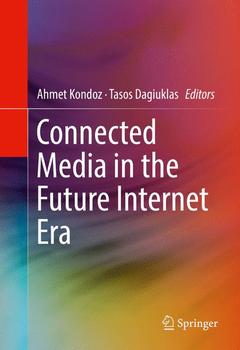Description
Connected Media in the Future Internet Era, 1st ed. 2017
Coordinators: Kondoz Ahmet, Dagiuklas Tasos
Language: English
Subject for Connected Media in the Future Internet Era:
Keywords
3D Media; 3D Media Capturing; 3D Media Quality of Experience; 3D Media Transmission; 3D Multi-view Video; 3D Technologies; 3D Video Compression; 3D Video Quality; 3D Video Quality Consistency; DVB-NGH; DVB-T2; FP7 European Project ROMEO; High Quality Real-time Collaboration 3D; Multi-view Video Delivery; Peer-to-Peer Distribution; Social TV; Spatial Audio
Support: Print on demand
Description
/li>Contents
/li>Comment
/li>
This book is the last of a series of three annual volumes devoted to the latest results of the FP7 European Project ROMEO. The present volume provides state-of-the-art information on 3D multi-view video, spatial audio networking protocols for 3D media, P2P 3D media streaming, and 3D Media delivery across heterogeneous wireless networks among other topics. Graduate students and professionals in electrical engineering and computer science with an interest in 3D Future Internet Media will find this volume to be essential reading.
Describes the latest innovations in 3D technologies and future Internet media
Focuses on research to facilitate application scenarios such as social TV and high-quality, real-time collaboration
Discusses QoE for 3D
Represents the last of a series of three volumes devoted to contributions from FP7 projects in the area of 3D and networked media
Includes supplementary material: sn.pub/extras




